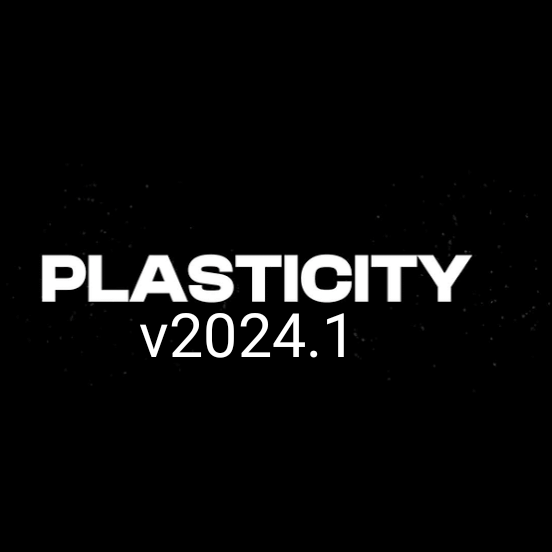Artificial intelligence is moving at lightning speed, with each year bringing innovations that redefine what’s possible. If you’re curious about the latest developments in AI language models and want to know more about the advancements in “plasticity v2024.1 中文,” you’re in the right place! In this blog post, we’ll break down everything you need to know about this new AI model in simple, easy-to-understand terms. Let’s dive into what makes Plasticity v2024.1 such a big deal and why it’s becoming so popular among Chinese-speaking users.
What is Plasticity v2024.1 中文?
Plasticity v2024.1 中文 is a newly launched language model designed specifically for the Chinese language. It is built to understand, interpret, and generate content in Chinese more effectively than any previous model. The “plasticity” in its name refers to the model’s flexibility and adaptability—two features that make it especially powerful for various applications, from text generation to data processing.
This model is a version update, meaning it’s an improved, fine-tuned version of earlier models, designed to meet the growing demand for high-quality, Chinese-language AI.
Why Plasticity v2024.1 中文 Stands Out
The creators of Plasticity v2024.1 have invested in powerful algorithms that increase accuracy, context awareness, and overall performance. Some standout features include:
- Enhanced Language Understanding: Improved comprehension of complex Chinese syntax, idioms, and regional dialects.
- Faster Response Times: This version is optimized for speed, providing quicker answers and generating content more efficiently.
- Versatile Applications: Can be used across multiple sectors, from customer support to content creation, offering seamless Chinese-language interactions.
Key Features of Plasticity v2024.1 中文
Let’s look closer at what makes Plasticity v2024.1 unique. Here are its main features that AI enthusiasts and users alike are buzzing about:
- Contextual Accuracy: The model has an improved understanding of context, which is vital for nuanced languages like Chinese. This means it can handle complex sentences and maintain topic relevance over extended conversations.
- Advanced Grammar Processing: Plasticity v2024.1 is designed to be less robotic and more “human-like,” with a keen understanding of the subtle intricacies of Chinese grammar. This improvement helps reduce awkward phrasing and translation errors, providing a smoother user experience.
- Improved Idiom Recognition: Chinese has numerous idioms and cultural references that are often difficult for machines to interpret correctly. With Plasticity v2024.1, this problem is significantly reduced as it has been trained on a large dataset of Chinese idioms and expressions.
- Faster Response Time: Users have reported a noticeable increase in speed, allowing for real-time applications that demand quick AI responses, such as live chat support or interactive learning platforms.
- Highly Adaptable: This model isn’t just built for a single function. Its adaptability means it can be used in various settings, including business, education, entertainment, and personal applications. The AI can be adjusted to handle different tones, from formal business language to casual conversational tones.
Practical Applications of Plasticity v2024.1 中文
Here are some real-world uses for Plasticity v2024.1 that demonstrate its flexibility and utility:
- Customer Service: Businesses can integrate this model to provide Chinese-language customer support that sounds natural and engages customers effectively.
- Content Creation: Writers and content creators can use it to generate ideas, translate content, or even create full articles in Chinese without sacrificing quality.
- Language Learning: For Chinese learners, Plasticity v2024.1 can be an interactive tutor, answering questions and providing instant feedback.
- Research and Data Analysis: It can analyze Chinese-language data and summarize key points, saving researchers valuable time.
Why Plasticity v2024.1 中文 is a Game-Changer for Chinese AI
This model doesn’t just aim to keep up with human interaction; it aspires to excel in Chinese language understanding. For a language as diverse and rich as Chinese, this is no small feat. The refined processing of idioms, dialects, and context makes Plasticity v2024.1 a cutting-edge choice, allowing businesses and individuals to leverage the power of AI in a way that’s never been more accessible or precise.
How to Start Using Plasticity v2024.1 中文
Curious about trying it out for yourself? Getting started is easy:
- Access an AI Platform: Many platforms, including mobile apps and websites, already support Plasticity v2024.1. Some even offer a free trial.
- Test Its Features: Use the model to write, translate, or answer questions to get a feel for its responsiveness and accuracy.
- Customize for Your Needs: Most platforms allow you to tailor the model’s tone and output style to suit your purpose, whether professional or casual.
Conclusion: Why You Should Explore Plasticity v2024.1 中文
Plasticity v2024.1 中文 is transforming the landscape for Chinese language AI, offering highly accurate, context-aware, and adaptable technology. For anyone looking to integrate AI into their daily lives or business operations, this model provides an impressive level of language understanding, which is invaluable in a world that increasingly relies on digital communication.
Whether you’re a business professional, a content creator, or simply curious about AI, Plasticity v2024.1 中文 is worth exploring. As the model continues to evolve, we can expect even more advancements in the field of language-based AI, making our interactions smoother, smarter, and more intuitive.
FAQs
1. What makes Plasticity v2024.1 中文 different from other AI models?
Plasticity v2024.1 中文 is specifically trained to understand and generate high-quality Chinese language content. Its main advantage is its accuracy in handling complex grammar, idioms, and contextual relevance, making it a top choice for Chinese-speaking users.
2. Can I use Plasticity v2024.1 中文 for business applications?
Absolutely! This model is ideal for business purposes like customer service, content creation, and data analysis. Its adaptable nature allows companies to tailor the model’s tone to match their brand voice.
3. Is Plasticity v2024.1 available for free?
Some platforms offer trial versions, but full access might require a subscription or fee. It’s best to check the options available on specific platforms where it’s hosted.
4. How accurate is Plasticity v2024.1 中文 with idioms and dialects?
The model has been trained extensively on a range of idioms and dialects, improving its ability to generate natural responses. However, as with all AI, occasional errors can occur, though they are much less frequent with this updated model.
5. How fast is Plasticity v2024.1 compared to previous versions?
Plasticity v2024.1 boasts faster processing speeds and response times, making it efficient for real-time applications, such as live customer support or interactive learning.
6. Can it help with Chinese language learning?
Yes! Plasticity v2024.1 can act as a conversational tool and answer questions in Chinese, making it a helpful companion for language learners looking to practice and receive instant feedback.

